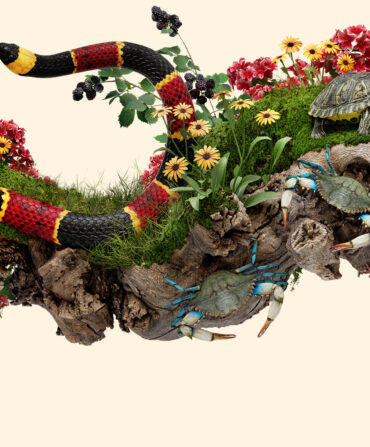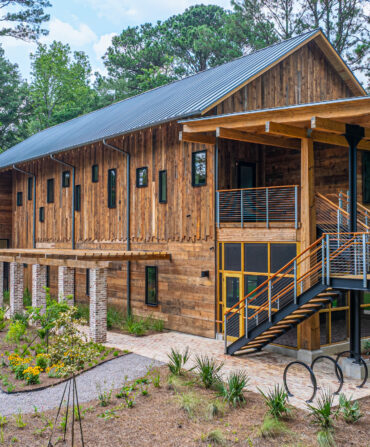Land & Conservation
See One of the Only Old-Growth Swamps in the South Covered in Snow
Photographer Mac Stone packed up and camped in South Carolina’s Beidler Forest overnight to document the ancient wetlands as the flurries came down

Photo: Mac Stone
Snow dusts South Carolina’s Francis Beidler Forest.
Like many South Carolinians this week, conservation photographer Mac Stone was glued to the forecast and its promise of snow. But while others made plans to hunker down or build snowmen, Stone prepared for a very different mission: He wanted to capture portraits of one of his favorite places in the world, the old-growth swamp in Harleyville, South Carolina’s Francis Beidler Forest, dusted in white.

The 18,000-acre Audubon preserve, threaded by boardwalks and frequented by painted buntings, migratory warblers, and woodpeckers galore, is special any time of year. There are only three such pristine, old-growth swamps like it in the Southeast: a portion of South Carolina’s Congaree National Park, Black River Swamp in North Carolina, and Corkscrew Swamp in Florida. As part of a long-term project, Stone is documenting all four of them, in all types of weather. “I want to provide a window into what the Southeast used to look like before industrial logging,” he says. “The thousand-year-old trees and the landscape of an old-growth swamp is primeval, and so incredibly beautiful because it has never been touched.” The chance to capture such a place in the snow was one he couldn’t pass up, so he loaded up his camping gear—which was suited for much warmer weather—and headed to Beidler Forest to sleep among the cypress trees. (Stone has a special permit issued to him to camp in the swamp.)
As the flurries started, he huddled in his tent, but the urge to witness the scene as it unfolded proved too great. “It sounded like white noise hitting the tent, and I just thought, ‘I really can’t wait till morning to see what this is going to look like.’” He slogged around in the icy dark, backlighting trees and capturing the flakes tumbling down, until his fingers and toes went numb. “I had never experienced a swamp like that,” he says. “It was like magic.”
The next morning brought beautiful shots, too—the water freezing in swirls as it flowed through the swamp, and little forests of cypress knees, looking like stalagmites all dusted in snow. “Cypress trees are one of the most resilient trees on Earth,” Stone says. “They experience these dramatic extremes, like high floods, long droughts, hurricanes, fire—and occasionally, snow.”
Below, see several of his shots.
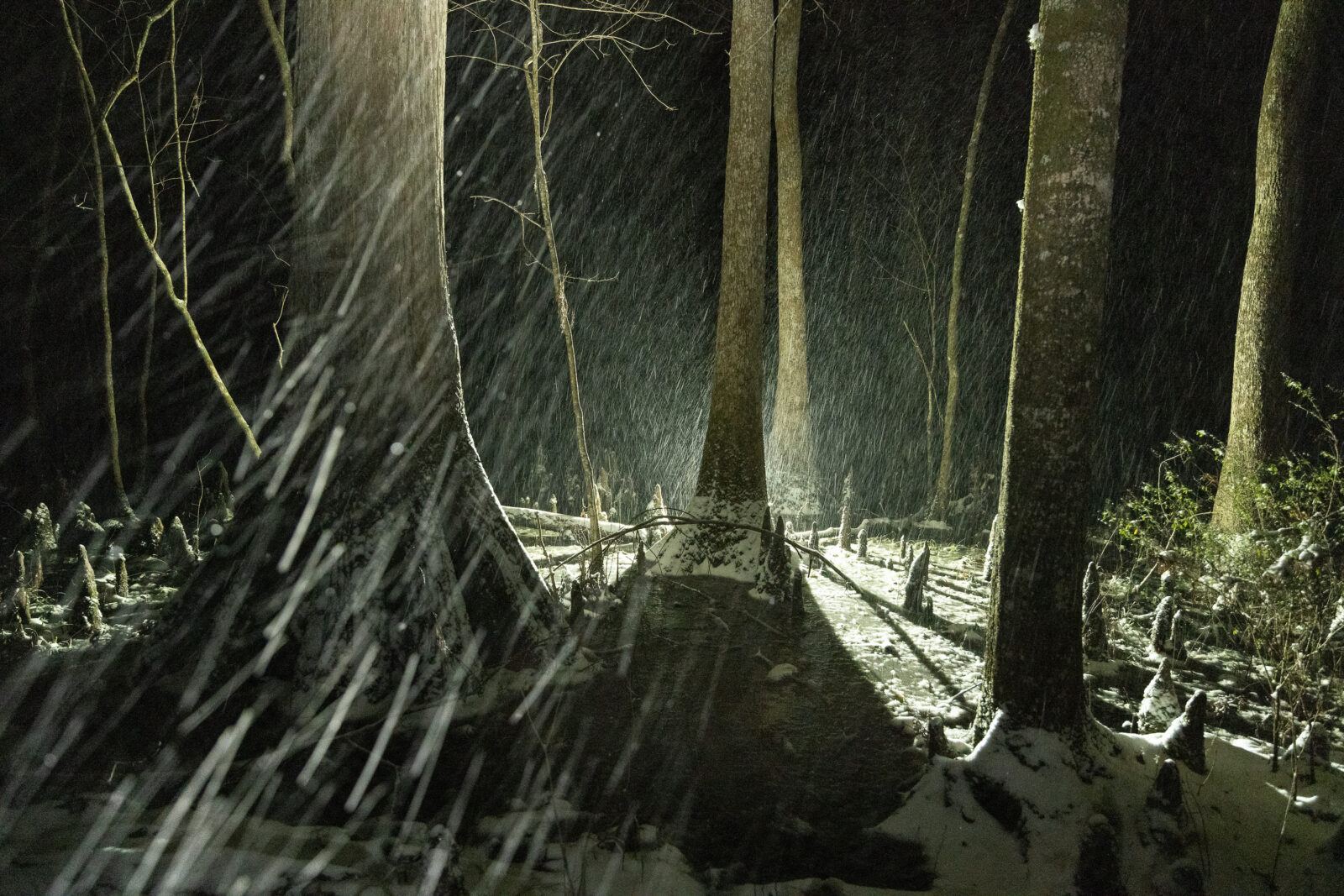
Photo: Mac Stone
Flurries of snow come down in the swamp.
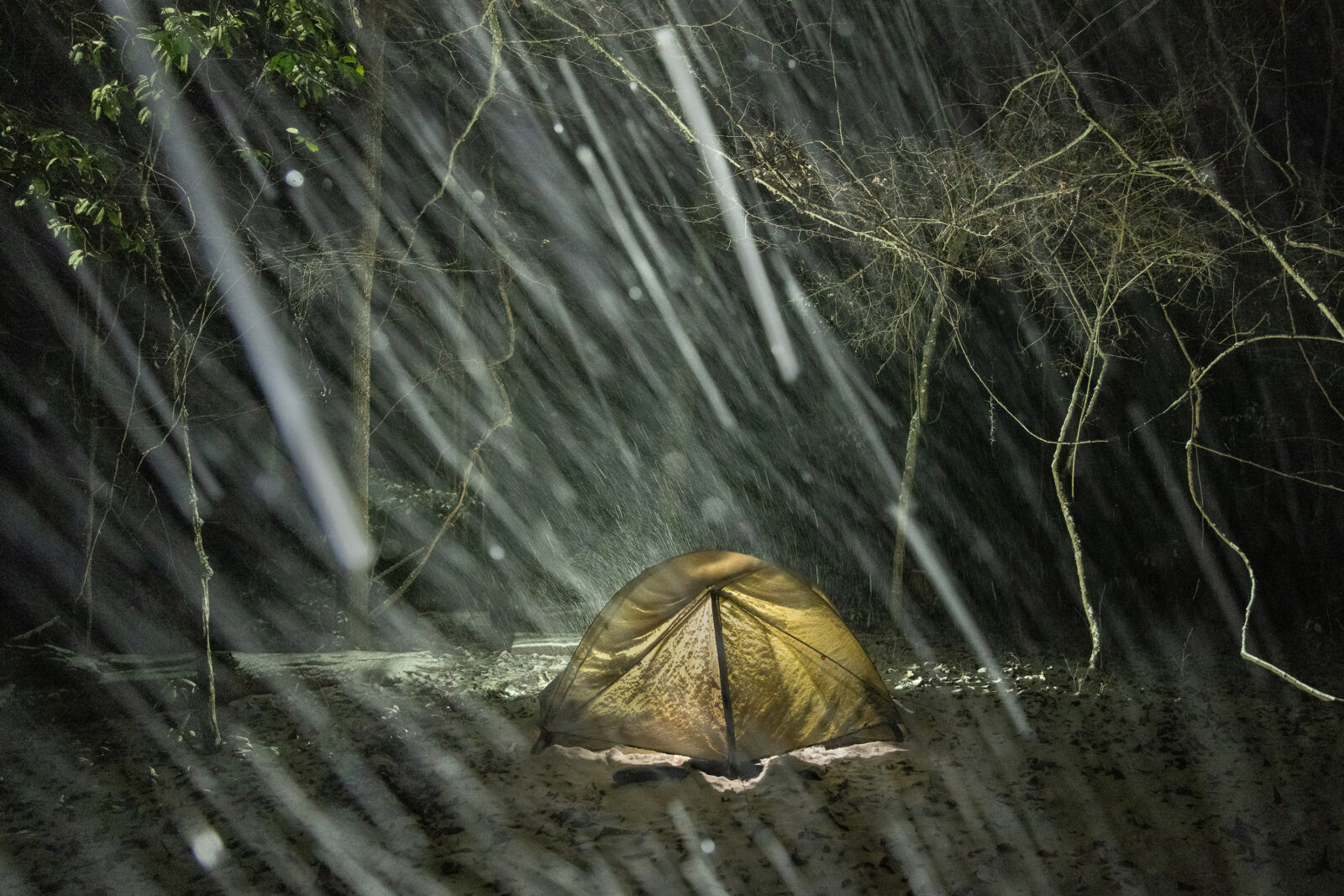
Photo: Mac Stone
Stone’s tent, lit from within.

Photo: Mac Stone
Flakes cling to the buttresses of cypress trees.
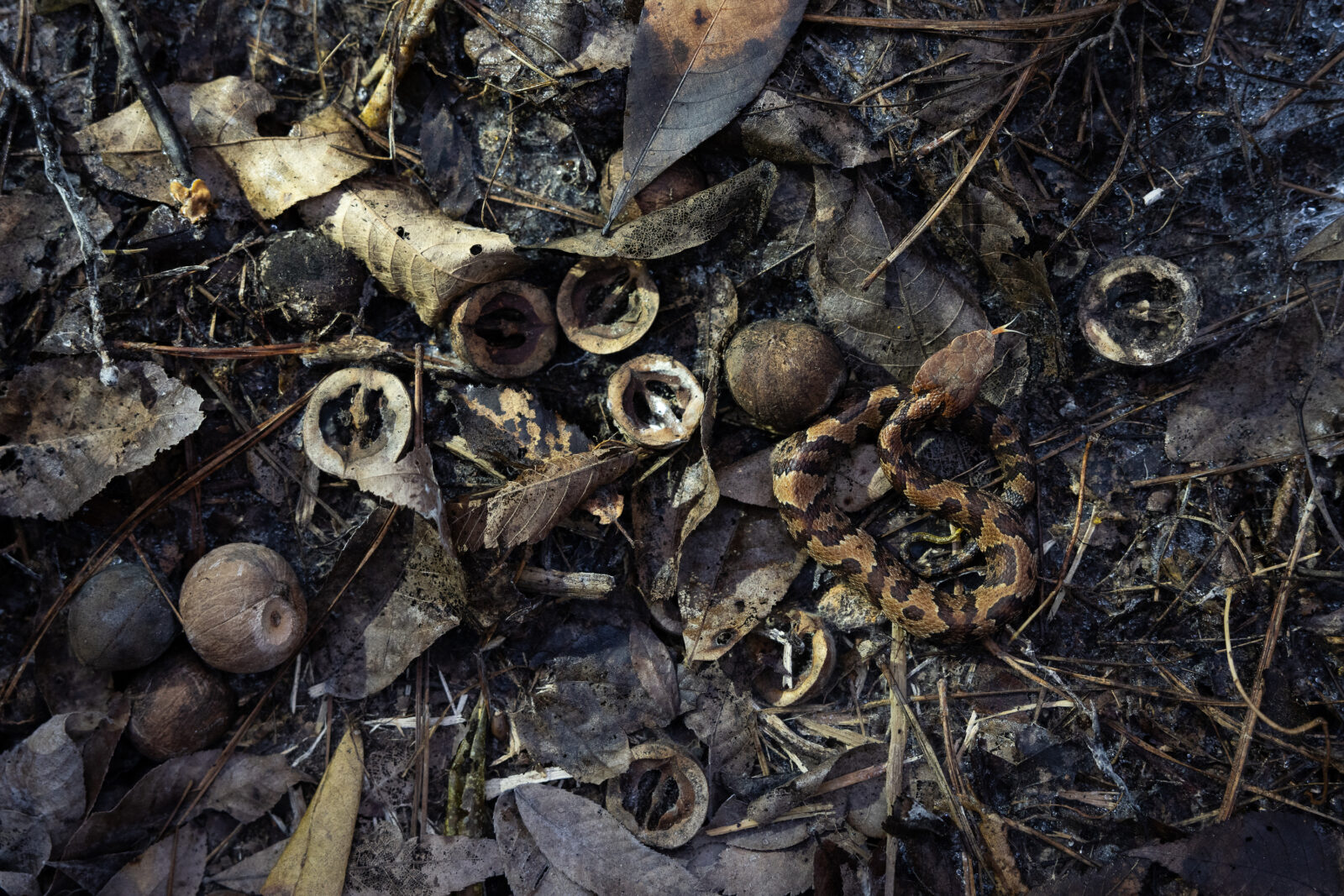
Photo: Mac Stone
A baby cottonmouth waits out the cold on the forest floor.
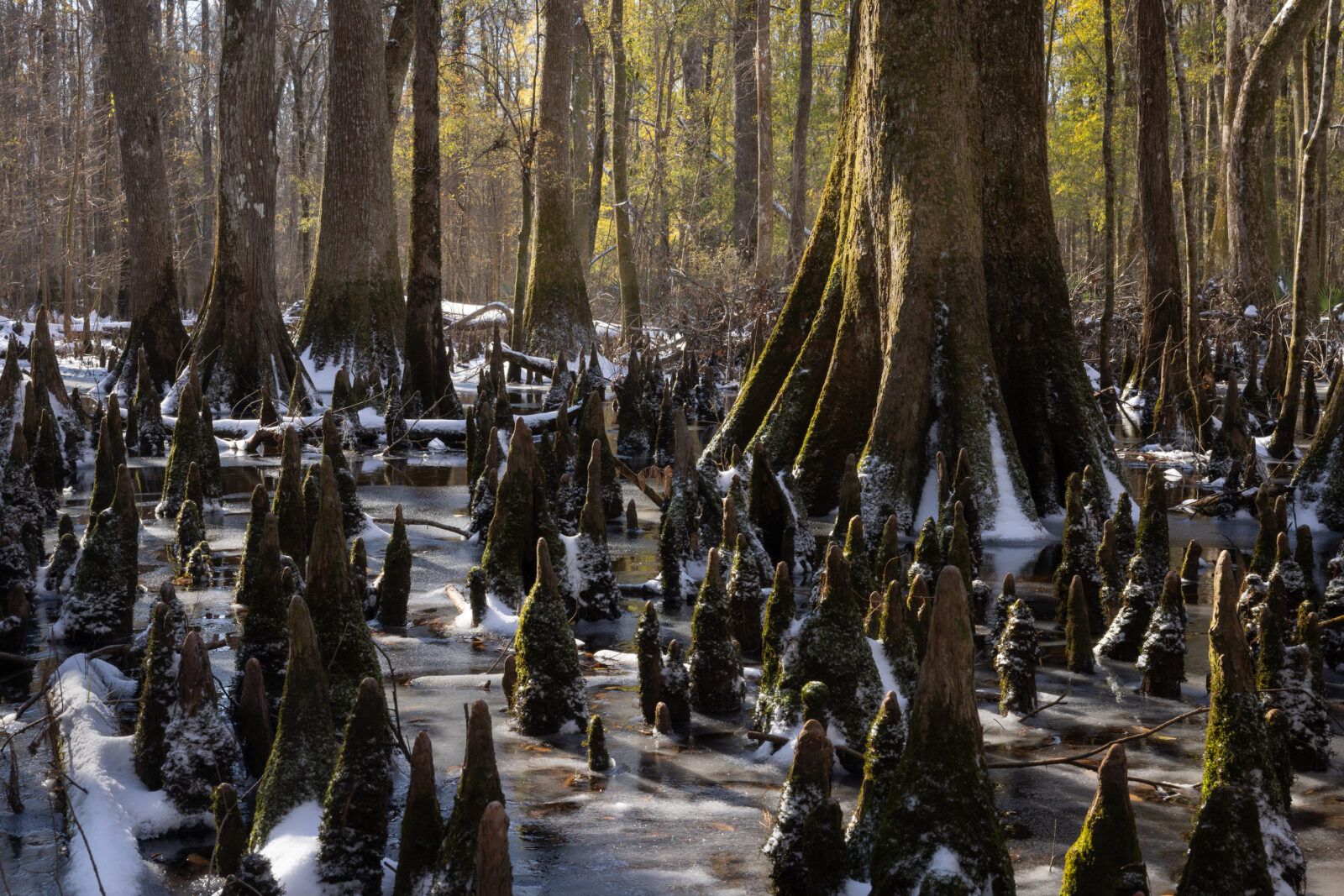
Photo: Mac Stone
Mossy and snow–dusted cypress knees.
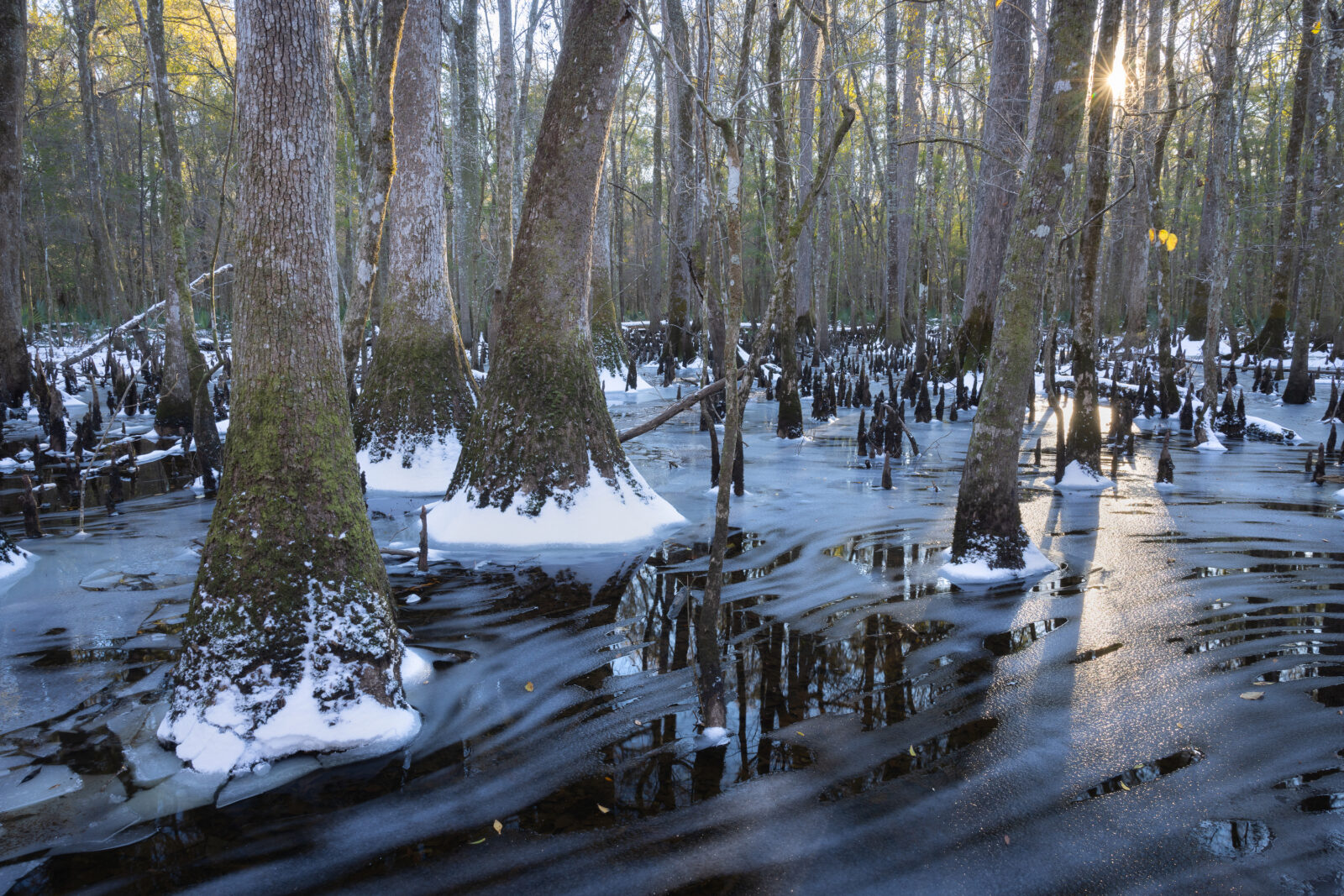
Photo: Mac Stone
Whorls of ice on top of the blackwater.


